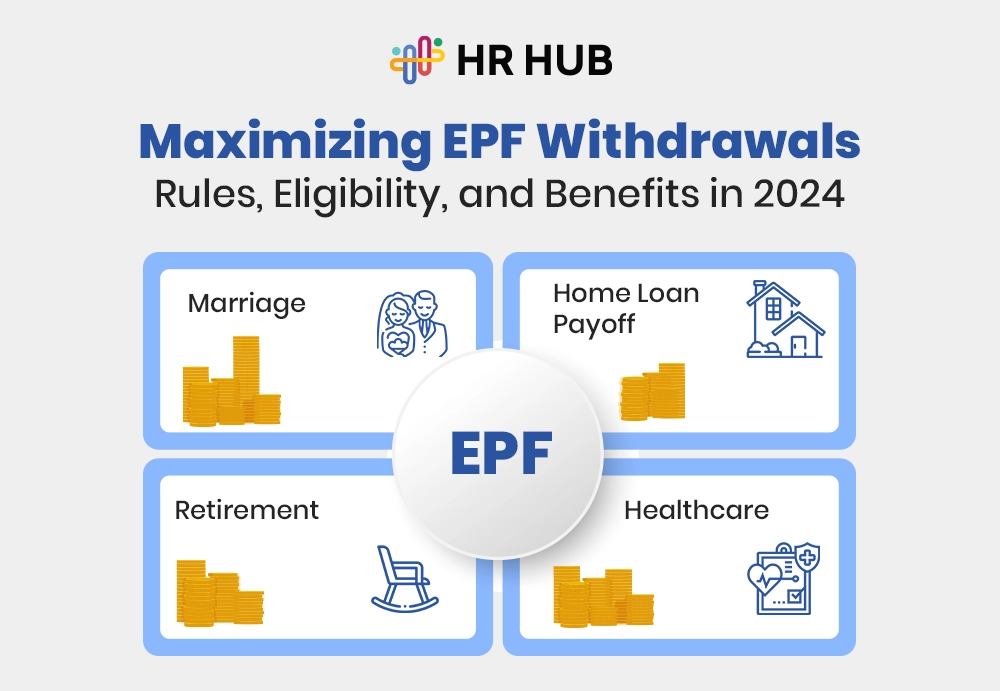Let’s face it—traditional performance reviews have overstayed their welcome. Waiting for the year-end to tell someone how they’ve done is like telling a footballer how they played after the final whistle. By then, the match is long over—and so is the motivation.
Modern businesses aren’t waiting around anymore. They’re building performance management systems that speak the language of now. If your system still revolves around forms, ratings, and one awkward annual meeting, it's time to pivot.
This blog isn't a checklist—it’s a reality check. Here's how you create a performance management system that works.
How To Create a Performance Management System?
Let’s explore the key metrics essential in defining how to create your organization's performance management system.
First, Redefine What Performance Means
Let’s pause here. When you say “performance,” what do you mean?
Is it just achieving sales numbers or delivering client projects? Or does it also include teamwork, ownership, and learning agility?
In today’s evolving workplace, high performance looks a lot more like:
- Collaboration over competition
- Initiative over instruction
- Problem-solving over perfection
Your performance management system should reflect this shift.
Ask yourself:
- Are we only measuring results or also how those results are achieved?
- Are we rewarding silent contributors or only spotlight performers?
- Is our system flexible enough to capture non-linear growth?
Tip: Build competency frameworks that combine hard metrics with soft skills, such as leadership, creativity, and emotional intelligence. HR HUB’s performance management system lets you customize evaluation criteria so you see the full picture.

Real-Time Feedback: The New Currency of Growth
Imagine this: An employee just handled a client crisis like a pro. But instead of waiting till December to say “Well done,” their manager gives them a quick shoutout the same day.
Now multiply that by 200 employees. That’s culture in motion.
Real-time feedback fuels performance. It:
- Reinforces behavior when it matters most
- Keeps communication channels open
- Builds a habit of continuous improvement
But feedback isn’t always praise. Constructive input can spark real growth when delivered with context and care.
What you can do:
- Replace “monthly review meetings” with short weekly 1:1s
- Train managers to give instant, specific feedback
- Introduce peer-to-peer feedback loops.
HR HUB Insight HR HUB integrates real-time recognition tools and allows teams to track, share, and act on feedback instantly, whether kudos or course correction.
Goal Setting: Shift from Deadlines to Purpose
Old way: Set a target. Forget it. Rush to meet it. Repeat.
New way: Set goals that motivate and evolve with the individual.
If your goals still sound like “Increase sales by 20%,” it’s time to upgrade.
Smart goal setting within a strong performance management system should:
- Be collaborative, not dictatorial
- Connect personal aspirations to the team mission.
- Include short-term and long-term vision.
- Get regularly reviewed (and not just at year-end)
Ask your team:
- “What goal excites you this quarter?”
- “What support do you need to achieve this?”
- “How does this align with your career roadmap?”
Example: Instead of “Improve client satisfaction score,” try: “Co-lead a customer experience revamp with the support team to improve client satisfaction by 15%—measured through post-project surveys.”
HR HUB Feature Goals in HR HUB can be set at multiple levels—individual, team, and company-wide—with auto-alignment and progress tracking that updates in real time.
Employee Appraisals That Don’t Feel Like Ambushes
Let’s call it out—most employees dread appraisals. And most managers? They wing them.
Why? Because they often feel disconnected from the work that’s happened.
It’s time to flip the model:
- Replace once-a-year reviews with quarterly snapshots
- Combine self-assessments, peer reviews, and manager input.
- Include real-time data from projects, feedback, and goals.
- Focus on growth conversations, not just ratings.
Interactive idea: Introduce “Growth Check-ins” every quarter. A 20-minute dialogue covering:
- What’s going well
- What’s blocking progress
- One skill to build before the next check-in
HR HUB Advantage It supports 90°, 180°, and 360° employee appraisals with customizable templates and automated reminders, making review cycles less stressful and more strategic.
From Insights to Action: The Analytics Edge
Let’s talk dashboards. Your performance data is missing the gold if it lives in spreadsheets or is forgotten as PDFs.
A good performance management system doesn’t just collect data. It connects dots.
Imagine being able to:
- Spot top performers at risk of burnout
- Track skill gaps by department
- Predict team morale based on feedback trends.
Metrics to track (beyond attendance):
- Goal completion velocity
- Feedback sentiment over time
- Peer rating variances
- Growth rate of individual competencies
HR HUB Magic Its visual reports make it easy for managers and HR leaders to make real-time, data-driven decisions, not assumptions.
The Human Behind the System
Let’s not forget: The most sophisticated performance management system is useless if people don’t believe in it.
Adoption = Trust.
Trust = Transparency + Fairness + Communication.
Foster a culture where:
- Feedback is expected, not feared
- Recognition is regular, not rare.
- Growth is a shared responsibility.
Because at the end of the day, it's not about tracking tasks—it’s about unlocking potential.

Turning Performance into Progress
Creating a successful performance management system is not about reinventing HR; it’s about making HR relevant again.
Real-time feedback, meaningful goal setting, and modern employee appraisals aren’t just nice-to-haves—they're your levers for loyalty, engagement, and results.
And if you're ready to bring this to life, HR HUB is built for it. With 360-degree appraisals, personalized feedback flows, goal alignment tools, and real-time analytics, HR HUB turns your performance strategy into a living, breathing system of progress.
Let’s not just manage performance. Let’s champion it.






